
Brain and Spine
Scope & Guideline
Advancing insights into the intricate interplay of brain and spine.
Introduction
Aims and Scopes
- Neurosurgical Techniques and Innovations:
The journal covers advancements in surgical techniques, including minimally invasive approaches, robotic-assisted surgeries, and novel surgical instruments, aiming to improve patient outcomes in neurosurgery. - Neuro-oncology Research:
A significant focus is placed on the management of brain tumors, including glioblastomas and meningiomas, with studies exploring surgical techniques, adjuvant therapies, and outcomes. - Spinal Disorders and Interventions:
Research on spinal conditions, including traumatic injuries, degenerative diseases, and surgical interventions like spinal fusion and decompression, is a core area of interest. - Neurotrauma and Rehabilitation:
The journal emphasizes studies on traumatic brain injuries and spinal cord injuries, including their management, rehabilitation strategies, and long-term outcomes. - Neurophysiology and Biomarkers:
Exploration of neurophysiological monitoring techniques, biomarkers for traumatic brain injury, and the role of neuroinflammation in various neurological conditions is highlighted. - Global Neurosurgery and Health Equity:
The journal addresses the challenges and advancements in neurosurgery within low-and middle-income countries, promoting equitable access to neurosurgical care and education.
Trending and Emerging
- Artificial Intelligence and Machine Learning Applications:
There is a growing trend towards exploring the applications of AI and machine learning in neurosurgery, particularly in diagnostic processes, treatment planning, and enhancing surgical training. - Telemedicine and Remote Consultations:
The COVID-19 pandemic has accelerated the adoption of telemedicine, with increasing publications on its impact, effectiveness, and integration into neurosurgical practices to enhance patient care and access. - Neurorehabilitation and Quality of Life Studies:
Research focusing on post-operative rehabilitation, quality of life assessments, and patient-reported outcomes is on the rise, highlighting the importance of holistic patient care. - Neurosurgery in Low-and Middle-Income Countries:
There is a notable increase in research addressing the unique challenges and advancements in neurosurgery within low-and middle-income countries, emphasizing health equity and global collaboration. - Neuroinflammation and Neurodegenerative Disease Research:
Emerging studies are focusing on the role of neuroinflammation in neurodegenerative diseases, linking it to surgical outcomes and the management of various neurological disorders.
Declining or Waning
- Traditional Open Surgery Techniques:
There appears to be a declining focus on traditional open surgery methods, as the field shifts towards minimally invasive techniques and robotic-assisted surgeries that promise better outcomes and lower complication rates. - Basic Neuroscience Research:
While foundational neuroscience studies remain important, there is a noticeable decrease in the publication of purely basic science research, with a growing preference for translational studies that directly influence clinical practices. - Postoperative Complications Studies:
Research specifically centered on postoperative complications without integrated approaches to patient management and rehabilitation is becoming less frequent, suggesting a shift towards comprehensive care models. - Historical Perspectives in Neurosurgery:
Papers focusing on historical reviews and perspectives are declining, possibly due to a stronger emphasis on current trends and future directions in neurosurgical practice.
Similar Journals

Egyptian Journal of Neurosurgery
Innovative Insights in Neurosurgery, Accessible to AllWelcome to the Egyptian Journal of Neurosurgery, a leading publication in the field of neurosurgery, meticulously curated by SPRINGERNATURE. With an E-ISSN of 2520-8225, this journal has been committed to advancing the understanding of neurosurgical practices since embracing Open Access in 2018, ensuring widespread accessibility of groundbreaking research and clinical insights. Based in London, England, at CAMPUS, 4 CRINAN ST, LONDON N1 9XW, the journal aims to bridge gaps in neuroscience research, providing a platform for innovative studies, systematic reviews, and case reports. By publishing high-quality, peer-reviewed articles, the Egyptian Journal of Neurosurgery aims to equip researchers, professionals, and students with the knowledge and tools necessary to enhance patient care and outcomes in neurosurgical practices globally. Join our vibrant community of scholars dedicated to exploring the complexities of the brain and spine, and contribute to the evolving narrative of neurosurgery.
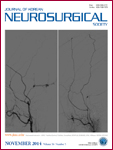
Journal of Korean Neurosurgical Society
Unlocking the Future of Patient Care through NeuroscienceThe Journal of Korean Neurosurgical Society, with its ISSN 2005-3711 and E-ISSN 1598-7876, stands as a paramount resource in the field of neurosurgery, bridging clinical practice and cutting-edge research in both neurology and multidisciplinary neuroscience. Published by the Korean Neurosurgical Society, this open-access journal has been committed to disseminating invaluable knowledge to the global scientific community since its establishment in 1972. Located in Seoul, South Korea, the journal underscores its prominence with impressive quartile rankings—Q3 in Neurology (Clinical), Q3 in Neuroscience (Miscellaneous), and Q2 in Surgery for 2023. Its standing in Scopus rankings further emphasizes its impact, with a ranking of #195/551 in Medicine: Surgery and #235/400 in Medicine: Neurology (Clinical). By fostering a platform for innovative findings and advancements in surgical techniques, the Journal of Korean Neurosurgical Society aims to support professionals, researchers, and students alike in their pursuit of excellence and knowledge in neurosurgery and related fields, ensuring a brighter future for patient care and scientific inquiry.
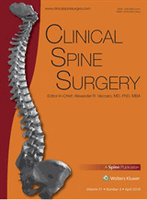
Clinical Spine Surgery
Exploring New Frontiers in Spine SurgeryClinical Spine Surgery is a premier academic journal dedicated to advancing the field of spine surgery and related disciplines, published by Lippincott Williams & Wilkins. With a focus on innovative research and clinical practices, this journal serves as a vital resource for surgeons, neurologists, and healthcare professionals involved in spine care. With an impressive Q1 ranking in Orthopedics and Sports Medicine and Q2 in Neurology (clinical), it underscores its impact and relevance within the medical community, reflecting its dedication to high-quality peer-reviewed content. The journal provides an open access model, ensuring that vital research is accessible to a global audience. Its significant presence in Scopus, with rankings that attest to its academic rigor and contribution to the field, further positions Clinical Spine Surgery as an essential forum for sharing cutting-edge findings and best practices. Whether you are a seasoned professional, a researcher, or a student, this journal offers invaluable insights that can enhance your understanding and practice in spine surgery.
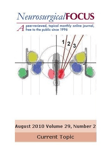
Neurosurgical Focus
Transforming Knowledge into Surgical MasteryNeurosurgical Focus, an esteemed journal published by the American Association of Neurological Surgeons, stands at the forefront of neurosurgical research and clinical practice. With its ISSN 1092-0684, this peer-reviewed publication has made a significant impact in the fields of Medicine, Neurology, and Surgery, consistently ranking in the top quartile (Q1) across these categories based on the 2023 metrics. The journal, which spans a rich temporal landscape from 2000 to 2024, offers a platform for disseminating vital research findings, insightful reviews, and innovative surgical techniques. While it is not open access, its high Scopus rankings—40th out of 551 in Medicine & Surgery and 97th out of 400 in Neurology—highlight its broader influence and the quality of research it curates. As an essential resource for researchers, clinicians, and students, Neurosurgical Focus is dedicated to advancing the field of neurosurgery and fostering intellectual discourse within the community.
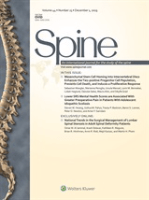
SPINE
Advancing knowledge in spine health since 1976.SPINE, published by Lippincott Williams & Wilkins, is a leading academic journal in the fields of Orthopedics, Neurology, and Sports Medicine. Established in 1976, this reputable journal has made significant contributions to advancing clinical and scientific knowledge, with its impactful research evidenced by its prestigious Q1 classification across three essential categories in 2023 and a notable ranking of #51 in Orthopedics and Sports Medicine and #117 in Clinical Neurology as per Scopus. SPINE aims to disseminate high-quality research articles, reviews, and clinical studies that address cutting-edge topics and challenges in spine-related health, thereby serving as an invaluable resource for researchers, healthcare professionals, and students alike. With its commitment to rigorous peer review and a wide readership, SPINE continues to be at the forefront of innovations in spine health & disease from 1976 to 2024, upholding its reputation as a catalyst for progress in the medical community.

Neurotrauma Reports
Bridging knowledge gaps in neuroscience.Neurotrauma Reports, published by MARY ANN LIEBERT, INC, stands at the forefront of disseminating pivotal research within the evolving field of neuroscience. With an emphasis on both cellular and molecular neuroscience and developmental neuroscience, this open access journal, initiated in 2020, aims to bridge gaps in knowledge concerning neurotrauma, a critical area impacting brain health and recovery. Although currently positioned in the lower quartiles as per the 2023 category rankings, the journal provides invaluable insights that foster academic dialogue and collaboration among researchers, professionals, and students alike. Through its commitment to open access, Neurotrauma Reports ensures that cutting-edge research is accessible to a diverse audience, enhancing the visibility of emerging studies and fostering innovation within the field. Readers can explore this journal to stay updated with the latest findings, methodologies, and reviews that are shaping our understanding of neurotrauma, ultimately contributing to improved treatments and outcomes.
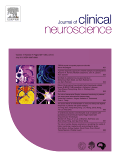
JOURNAL OF CLINICAL NEUROSCIENCE
Exploring New Horizons in Clinical NeuroscienceJOURNAL OF CLINICAL NEUROSCIENCE is an esteemed publication dedicated to advancing the field of neurology and related medical disciplines. Published by ELSEVIER SCI LTD, this journal serves as a vital resource for researchers, clinicians, and educators, providing a platform for the dissemination of high-quality research findings since its inception in 1994. With a noteworthy impact factor and ranked within the Q2 and Q3 categories across various medical specialties, including neurology and surgery, the journal positions itself at the forefront of clinical neuroscience. Although it operates under a traditional subscription model, the journal’s commitment to publishing rigorous scientific work ensures that it remains an integral reference for anyone involved in the diagnosis, treatment, and understanding of neurological disorders. Readers can access a diverse array of articles that not only highlight current research trends but also foster the exchange of innovative ideas in clinical practice.

CHILDS NERVOUS SYSTEM
Enhancing Understanding of Childhood Neurological ConditionsCHILDS NERVOUS SYSTEM is a distinguished academic journal published by SPRINGER, focusing on the vital intersections of pediatrics, neurology, and child health. With an ISSN of 0256-7040 and an E-ISSN of 1433-0350, this journal has been an important platform for research since its inception in 1985 and continues to contribute significantly to the field, as reflected in its impressive quartile standings: Q3 in Medicine (miscellaneous) and Neurology (clinical), and Q2 in Pediatrics, Perinatology, and Child Health for 2023. Despite its Q3 rankings in two categories, it holds a respectable position in Scopus rankings, showcasing its relevance among peers in pediatric and neurological studies. The journal aims to disseminate new research and insights that enhance the understanding of neurological conditions in children, offering a comprehensive view of both clinical practices and advancements in medicine. Though it currently does not provide Open Access options, its rigorous peer-review process ensures high-quality content that is indispensable for researchers, clinicians, and professionals dedicated to improving child health outcomes.

NEUROSURGERY
Fostering Collaboration in Neurosurgical Research.NEUROSURGERY, published by Lippincott Williams & Wilkins, stands as a foremost journal in the field of clinical neurology and surgery, reflecting a commitment to advancing knowledge and practice through high-quality research and discourse. With an impact factor indicative of its scholarly significance and a remarkable Scopus ranking placing it in the Q1 category for both neurology and surgery, this journal provides a vital platform for clinicians, researchers, and students to explore cutting-edge developments and innovations. NEUROSURGERY publishes peer-reviewed articles that span the spectrum of neurosurgical practice, from basic science discoveries to clinical applications, fostering a collaborative exchange of ideas and methodologies. Since its inception in 1977, the journal has maintained a focus on delivering substantive research that informs practice and enhances patient care, making it an essential resource for professionals dedicated to the fields of neurology and surgery. The journal is based in India, and while it currently does not offer open access options, its rich archive from 1977 to 2024 ensures a comprehensive repository of knowledge for those engaged in this critical area of medicine.

SURGICAL CLINICS OF NORTH AMERICA
Fostering Excellence in Surgical Education and ResearchSurgical Clinics of North America, published by W B Saunders Co-Elsevier Inc, is an esteemed journal in the field of surgery, recognized for its commitment to advancing surgical knowledge and practice since its inception in 1945. With an impressive impact factor and ranked in the Q1 category of surgery journals, it occupies a prominent position in the academic landscape, with a Scopus rank of #53 out of 551, placing it in the 90th percentile for medicine and surgery. The journal provides a platform for original research, comprehensive reviews, and critical analyses, appealing to surgeons, medical professionals, and students alike. Although it does not have open-access options, it remains a vital resource for those looking to stay updated on the latest surgical techniques, innovations, and insights into operative challenges. The journal's rigorous peer-review process ensures that only high-quality articles contribute to the ongoing dialogue within the surgical community, making it an indispensable tool for enhancing clinical practices and fostering educational growth.